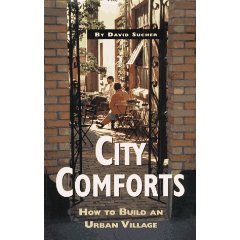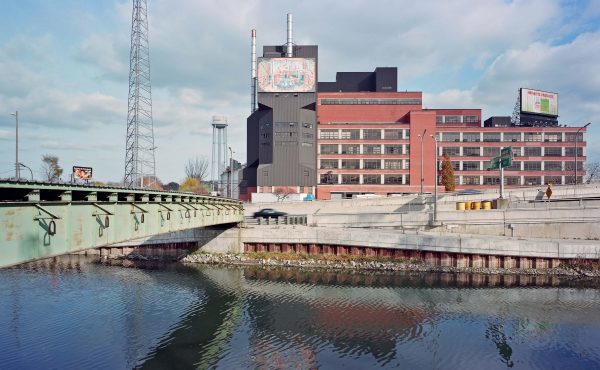David Sucher’s City Comforts is a little gem of a book. First published in 1995, it’s a collection of the small details that make urban spaces work, illustrated with black-and-white photos the author has taken over years of observing cities, and lovely little sketches.
At the heart of the book is the belief that what makes urban spaces appealing are details, not grand gestures. But details are easily overlooked — it’s difficult to mandate them by regulations, architects don’t get famous for them, they take extra time for developers. So the book addresses this challenge by identifying and illustrating a wide variety of details that make a difference, providing a resource for builders, communities, architects and planners that can guide them in creating urban spaces that people like.
Sucher’s goal is creating an “urban village” — a deliberately contradictory term, a mixing of opposites that creates a positive tension, between the dynamic and diverse, and the friendly and familiar. The goal is to create a public space that is comfortable and appealing for people — such a modest goal, and yet one that we seem to find difficult to accomplish.
He notes (p. 92) “It is small and modest improvements in the city’s physical shape, repeated over and over again, which give a city its vitality and interest and comfort. Unfortunately, these small items of civic courtesy do not show up up in the glossy architectural and design magazines, but they are in fact the truly important items.”
Since Sucher deliberately bases his suggestions on observation of what already works, generally at a modest scale, his ideas don’t come off as groundbreaking — rather, they are a process of sharing ideas and gathering them together, and making people conscious of them. Among his suggestions for creating spaces where people encounter each other: build close to the sidewalk; provide a place for music; put little kiosks in transit shelters, for perhaps newspapers or coffee (a true inhabitant of Seattle, Sucher often repeats the benefits of providing espresso in as many ways and locations as possible).
A great benefit of his emphasis on modest measures is that they are fairly easily achievable — they don’t cost much, and they don’t necessarily take a lot of work. They just need effort and desire on the part of communities, architects, builders, and planners (Sucher emphasizes several times that government cannot and should not try to do this work alone — he believes it can only happen effectively with the initiative of private builders and of the community).
I also found Sucher’s “postcard” ideal for zoning codes (p. 102) interesting — “short and severe”, he says, a few simple but strong rules that can be written on the back of a postcard, and builders can be creative within them (kind of like tight poetry structures like the haiku or the sonnet, which can in fact spur creativity within their structures).
Sucher is continuing to promote his ideas via a website (where you can buy the updated version of the book) and a City Comforts blog.






2 comments
Thanks for this; I’ll check it out. It reminds me of William Whyte’s Social Life of Small Urban Spaces, which is both a book and a film.
A hidden classic that belongs on every urbanist’s bookshelf alongside “The Death and Life of Great American Cities”. Great photo examples throughout too.
Especially useful for those interested in making tangible, incremental change instead of railing against the status quo and accomplishing little.